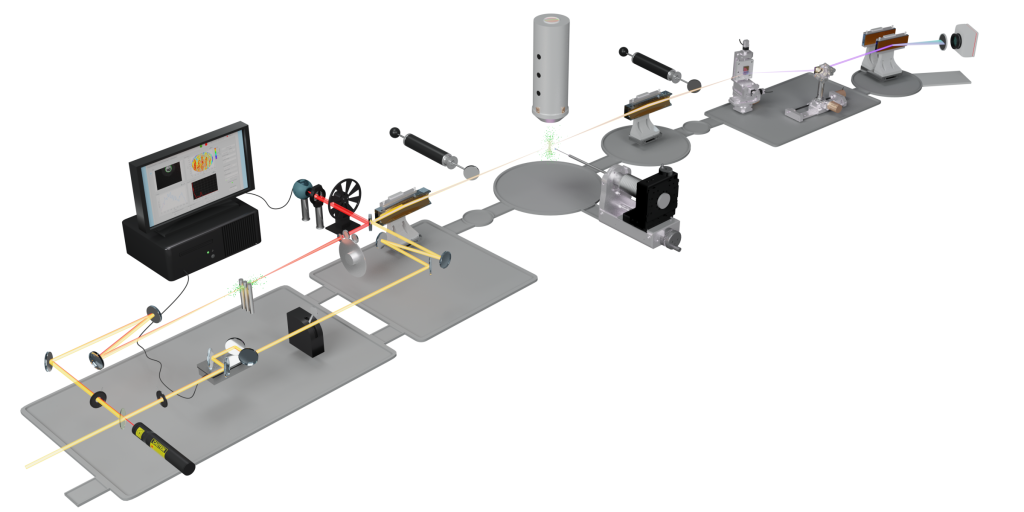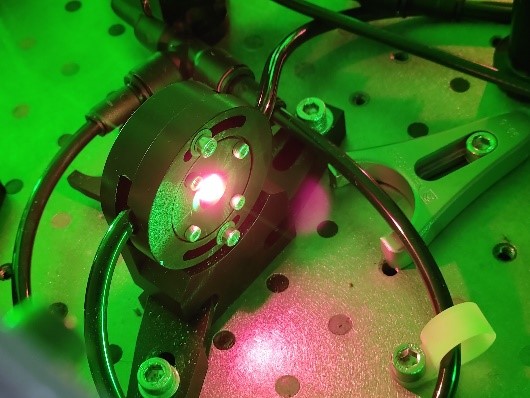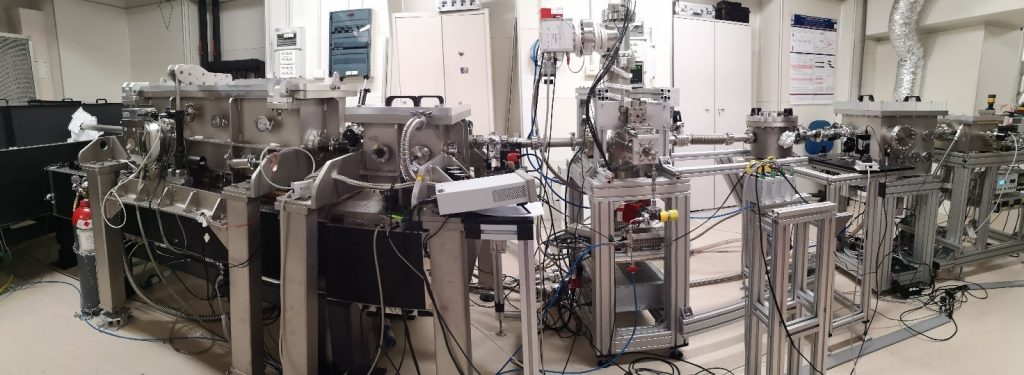In our lab we employ an XUV-IR pump-probe scheme in a two foci configuration to perform experiments with attosecond temporal resolution on solid state targets. The ultimate goal of these experiments is to widen our knowledge of strong field driven processes and coherent optical response of solid materials, toward their possible exploitation in PHz electronic devices.

The experimental activity of the laboratory aims at studying ultrafast dynamics in advanced materials, mainly in solid phase, by means of spectroscopic techniques with attosecond resolution. Few-cycle optical pulses (between 4 and 7 femtoseconds in duration) in the infrared-to-visible spectral region are employed to obtain pulses in the extreme ultraviolet (XUV), with a final duration of few hundreds of attoseconds, by exploiting the process of high-order harmonic generation in a noble gas. The XUV pulses are then combined with a portion of the driving infrared to perform “pump-probe” experiments with high temporal resolution by means of attosecond-resolved spectroscopic techniques. Specifically, these experiments investigate the electronic, excitonic and magnetic dynamics in advanced materials, employing methods known as attosecond transient reflectivity spectroscopy (ATRS) and attosecond transient absorption spectroscopy (ATAS). The study of such dynamics aims at resolving the fundamental physical mechanisms that govern light-matter interaction and possibly indicate a route to gain coherent control over such phenomena.
Since the processes that occur in the first instants during light-matter interaction determine the subsequent slower evolution of the system, understanding these phenomena is of primary importance to exploit the electro-optical properties of advance material at the most.
Laser source

The laser source is a Ti:Sapphire system with three-stage amplification that provides 25 fs pulses with an energy of 2 mJ at a repetition rate of 10 kHz with carrier-envelope phase stabilization. The duration of these pulses is compressed down to about 5 fs with a hollow core fiber compression system in combination with ultrabroadband chirped mirrors keeping an energy above 800 µJ.
Beamline
The few-cycle IR pulses emerging from the hollow-core fiber compressor are focused onto a gas cell containing a noble gas to produce the attosecond pulses in the extreme ultraviolet spectral region. The XUV radiation is then focused by a first toroidal mirror onto a gas target placed in the focal region of a time-of-flight spectrometer. This first interaction region can be used to perform pump-probe spectroscopy on gas targets or to support the experiments performed with solid samples, for example providing an external and simultaneous calibration measurement (i.e. attosecond streaking measurements). After this chamber, a second toroidal mirror collects the radiation and focuses it a second time, into a subsequent chamber equipped with an XUV reflectometer. This is where the pulses interact with the solid sample and the actual transient reflectance or absorption experiment are performed. Combining this with the simultaneous measurement in the first focus, the beamline allows pulse reconstruction to be simultaneous with the experiment on the solid sample. Therefore, we can establish a precise link between the observed dynamics in the solid target and the actual value of the pump electric field, enabling to assess such phenomena with unprecedented accuracy.

